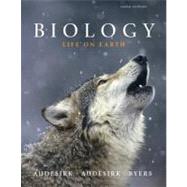
Terry and Gerry Audesirk grew up in New Jersey, where they met as undergraduates. After marrying in 1970, they moved to California, where Terry earned her doctorate in marine ecology at the University of Southern California and Gerry earned his doctorate in neurobiology at the California Institute of Technology. As postdoctoral fellows at the University of Washington’s marine laboratories, they worked together on the neural bases of behavior, using a marine mollusk as a model system. The Audesirks joined the faculty of the University of Colorado, Denver, in 1982, where they taught introductory biology and neurobiology, and researched mechanisms of heavy metal toxicity and the effects of estrogen on cultured neurons until their retirement in 2006.
Terry and Gerry share a deep appreciation of nature and of the outdoors. After retirement, they moved to a ranch near Steamboat Springs, where they enjoy hiking, horseback riding, and snowshoeing. Long-time members of many conservation organizations, they do volunteer work with the Nature Conservatory.
Bruce E. Byers , a midwesterner transplanted to the hills of western Massachusetts, is a professor in the biology department at the University of Massachusetts, Amherst. He has been a member of the faculty at UMass (where he also completed his doctoral degree) since 1993. Bruce teaches courses in ornithology and evolution.
A lifelong fascination with birds ultimately led Bruce to scientific exploration of avian biology. His current research focuses on the behavioral ecology of birds, especially on the function and evolution of the vocal signals that birds use to communicate. The pursuit of vocalizations often takes Bruce outdoors, where he can be found before dawn, tape recorder in hand, awaiting the first songs of a new day.
1. An Introduction to Life on Earth
I. LIFE OF THE CELL
2. Atoms, Molecules, and Life
3. Biological Molecules
4. Cell Structure and Function
5. Cell Membrane Structure and Function
6. Energy Flow in the Life of a Cell
7. Capturing Solar Energy: Photosynthesis
8. Harvesting Energy: Glycolysis and Cellular Respiration
II. INHERITANCE
9. The Continuity of Life: Cellular Reproduction
10. Patterns of Inheritance
11. DNA: The Molecule of Heredity
12. Gene Expression and Regulation
13. Biotechnology
III. EVOLUTION AND DIVERSITY OF LIFE
14. Principles of Evolution
15. How Organisms Evolve
16. The Origin of Species
17. The History of Life
18. Systematics: Seeking Order Amidst Diversity
19. The Diversity of Prokaryotes and Viruses
20. The Diversity of Protists
21. The Diversity of Plants
22. The Diversity of Fungi
23. Animal Diversity I: Invertebrates
24. Animal Diversity II: Vertebrates
IV. BEHAVIOR AND ECOLOGY
25. Animal Behavior
26. Population Growth and Regulation
27. Community Interactions
28. How Do Ecosystems Work?
29. Earth’s Diverse Ecosystems
30. Conserving Earth’s Biodiversity
The New copy of this book will include any supplemental materials advertised. Please check the title of the book to determine if it should include any access cards, study guides, lab manuals, CDs, etc.
The Used, Rental and eBook copies of this book are not guaranteed to include any supplemental materials. Typically, only the book itself is included. This is true even if the title states it includes any access cards, study guides, lab manuals, CDs, etc.